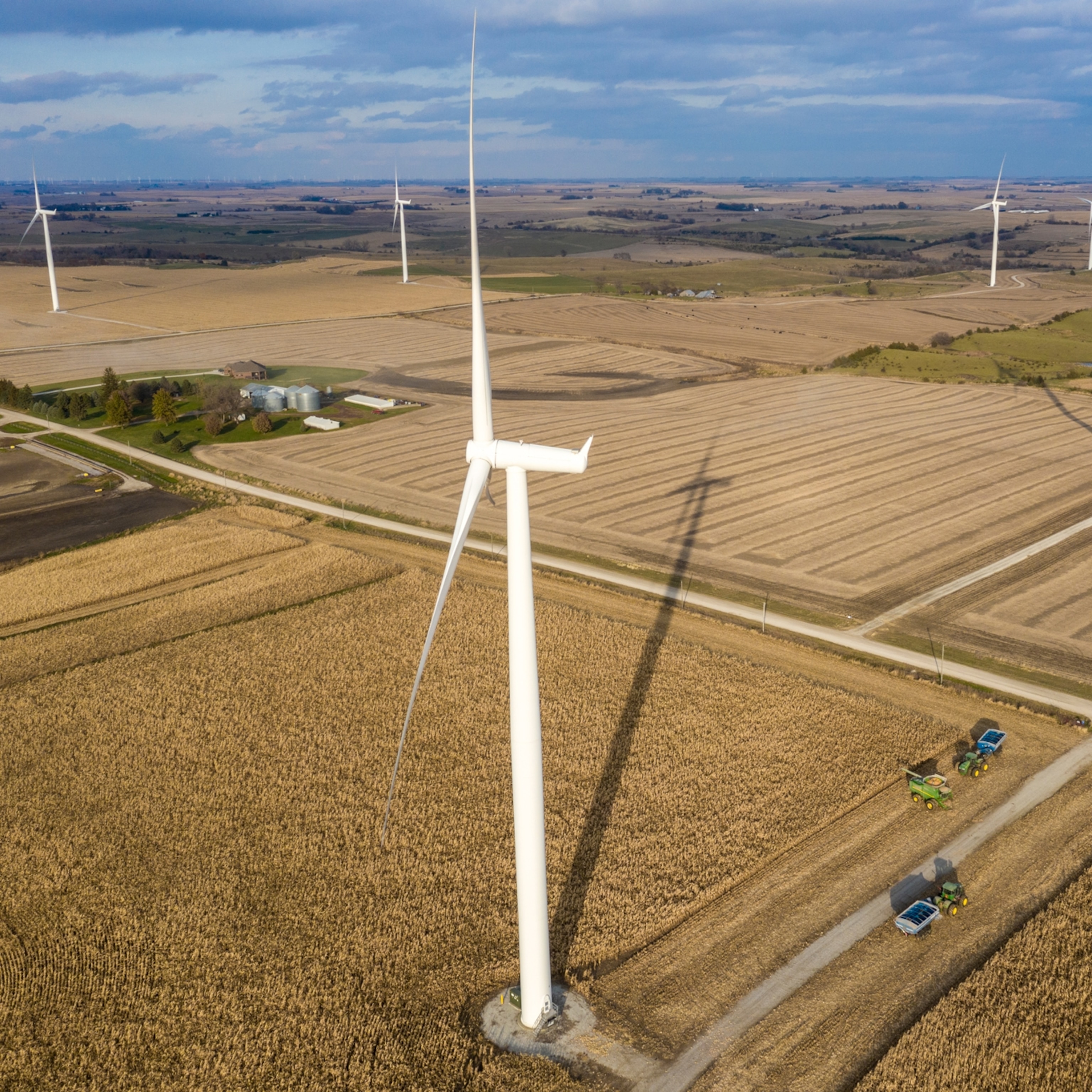We may be witnessing a historic change in our driving habits.
Americans love their cars and love to drive their cars. With each American traveling on average less than 10,000 miles a year and the country as a whole nearly three trillion total vehicle miles traveled per year (VMT), we are hands down the champs at racking up the miles. But of late, something remarkable and, for many, unexpected has been happening. It’s not so much that our automobile love affair has ended, rather that maybe, just maybe, it’s not quite as hot and heavy as it has been. (See related story: “U.S. Teenagers Are Driving Much Less: Four Theories About Why.”)
Driving Habits Switching Directions
And what is the evidence for this cooling of the passion between American drivers and their wheels?
Exhibit A is the graphic below showing U.S. data for total miles travelled and VMT per capita from 1988 to the present. Exhibit B is a similar plot from 1977 to 2003.


Together, these two graphs provide a record of Americans’ driving habits over a quarter century. And the story they tell is remarkable. Between 1977 and about 2004, VMT and VMT per capita rose steadily at a rate of about 2.7 and 1.5 percent per year respectively. There were some minor reversals in the trend: for four years during the late ‘70s and early ‘80s, a slice of time that saw the oil shock and accompanying recession, VMT noticeably dipped; the impacts of the smaller recessions of 1990 and 2001 can also be discerned. But with those three exceptions, the trend in vehicle miles traveled during the 25-year period preceding 2003 was upward and pretty steeply upward.
And then something happened. Starting in about 2004, the growth in VMT slowed and VMT per capita essentially went flat. (See Exhibit A.) In 2006, VMT per capita began falling, and in 2008, when the great recession hit, VMT also took a hit. Since 2009, VMT has been essentially flat, bouncing up a bit one year and then down the next, while VMT per capita has continued to fall. (See related photos: “Cars That Fired Our Love-Hate Relationship With Fuel.”)
Clearly, the pattern we’ve seen since around 2004 is fundamentally different from the pattern of the 20+ previous years. The question is why.
Is It the Economy, Stupid?
One potential explanation is that people are simply responding to economic pressure — with a down economy and unemployment up, people drive less. And, historically, people have tended to drive less during recessions.*
But I don’t think we’re seeing a driver response to hard economic times. For one, the slowdown in the rise in VMT and the fall in VMT per capita began well before the great recession. Second, take a look at this New York Times graphicNew York Times graphic plotting VMT and gross domestic product (GDP) over a 50-year span through 2010. Over the first 35 years, VMT and GDP tracked each other year after year. Then around 1997, the GDP and VMT lines begin to diverge with GDP increasing more rapidly then VMT. To me this is rather convincing evidence that something more fundamental is going on — an unprecedented decoupling of American driving habits and macroeconomic forces.
(By the way, another thing that has been going on of late is that fuel economy has been increasing and electric vehicle sales have been climbing — see yesterday’s post — and all these things working together are really having an impact on emissions.)
Could It Be Pain at the Pump?
The economy writ large may not explain the change in VMT, but a specific economic factor could. A likely candidate: the price of gasoline. In support of that theory, I present Exhibit C — a plot of VMT and gasoline prices since 1970. Two things to note:
- In inflation-adjusted dollars, the price of gasoline since 2008 (~$2.90/gallon in 2005 $s) is higher than it has ever been; and
- Prices began climbing to this level at about the same time that VMT began to level off.

One interpretation: we have hit a price threshold; a price so high that people are forced to find alternative ways to get where they need to go. If this is the case, here again, what we are seeing may not be a permanent change in American driving habits; should gasoline prices fall, VMT will probably start moving upward.
But there is another possibility.
From Automobiles to Trains and Buses
In the early 2000s quarterly mass transit ridership was between 2.3 and 2.4 million. But late in 2003, coincident with the beginnings of the change in VMT trend (and the rise in gas prices), ridership began trending upwards before settling into a new steady state of between of 2.5 to 2.7 million riders since 2008. Could this switch to mass transit be symptomatic of a more fundamental change in America?
(Source: American Public Transportation Association)
It May Be That We Are Changing
Another possibility (not mutually exclusive of the above) is that Americans are changing, finding new lifestyles that require less driving. For example, people are choosing to move from the outer suburbs to more centrally located, cars-not-needed urban areas; young folks are eschewing driving; more socializing and business travel are taking place virtually, and an aging population simply drives less. (See related story: “Driving the Limit: Wealthy Nations Maxed Out on Travel?“)
High gasoline prices might be forcing some of these changes on us to some extent, but the new trend in VMT illuminates a picture in which the change in driving habits is becoming internalized and may be becoming long-term. (See quiz: “What You Don’t Know About Gas Prices.”)
And on that note, here’s an interesting thought: with both U.S. greenhouse gas emissions and VMT running flat since 2008, it could be that we are seeing a profound change in the United States. A change in the American way of life that is less bent on both consumption and driving. And a way of life ready to embrace a low-carbon economy. Now there’s a nice idea for the New Year. (See related photos: “Rare Look Inside Carmakers’ Drive for 55 MPG.”)
________________
End Note
* Keep in mind that while recessions and miles traveled correlate well, this doesn’t tell us what initiated these recessions. Both recessions from the ’70s began with oil shocks where the supply of petroleum was curtailed and prices rose sharply. And even the smaller recessions in 1990 and 2001 were preceded by an increase in energy prices.
Related Topics
You May Also Like
Go Further
Animals
- Octopuses have a lot of secrets. Can you guess 8 of them?
- Animals
- Feature
Octopuses have a lot of secrets. Can you guess 8 of them? - This biologist and her rescue dog help protect bears in the AndesThis biologist and her rescue dog help protect bears in the Andes
- An octopus invited this writer into her tank—and her secret worldAn octopus invited this writer into her tank—and her secret world
- Peace-loving bonobos are more aggressive than we thoughtPeace-loving bonobos are more aggressive than we thought
Environment
- Listen to 30 years of climate change transformed into haunting musicListen to 30 years of climate change transformed into haunting music
- This ancient society tried to stop El Niño—with child sacrificeThis ancient society tried to stop El Niño—with child sacrifice
- U.S. plans to clean its drinking water. What does that mean?U.S. plans to clean its drinking water. What does that mean?
- Food systems: supporting the triangle of food security, Video Story
- Paid Content
Food systems: supporting the triangle of food security - Will we ever solve the mystery of the Mima mounds?Will we ever solve the mystery of the Mima mounds?
History & Culture
- Strange clues in a Maya temple reveal a fiery political dramaStrange clues in a Maya temple reveal a fiery political drama
- How technology is revealing secrets in these ancient scrollsHow technology is revealing secrets in these ancient scrolls
- Pilgrimages aren’t just spiritual anymore. They’re a workout.Pilgrimages aren’t just spiritual anymore. They’re a workout.
- This ancient society tried to stop El Niño—with child sacrificeThis ancient society tried to stop El Niño—with child sacrifice
- This ancient cure was just revived in a lab. Does it work?This ancient cure was just revived in a lab. Does it work?
- See how ancient Indigenous artists left their markSee how ancient Indigenous artists left their mark
Science
- Do you have an inner monologue? Here’s what it reveals about you.Do you have an inner monologue? Here’s what it reveals about you.
- Jupiter’s volcanic moon Io has been erupting for billions of yearsJupiter’s volcanic moon Io has been erupting for billions of years
- This 80-foot-long sea monster was the killer whale of its timeThis 80-foot-long sea monster was the killer whale of its time
- Every 80 years, this star appears in the sky—and it’s almost timeEvery 80 years, this star appears in the sky—and it’s almost time
- How do you create your own ‘Blue Zone’? Here are 6 tipsHow do you create your own ‘Blue Zone’? Here are 6 tips
Travel
- This town is the Alps' first European Capital of CultureThis town is the Alps' first European Capital of Culture
- This royal city lies in the shadow of Kuala LumpurThis royal city lies in the shadow of Kuala Lumpur
- This author tells the story of crypto-trading Mongolian nomadsThis author tells the story of crypto-trading Mongolian nomads








